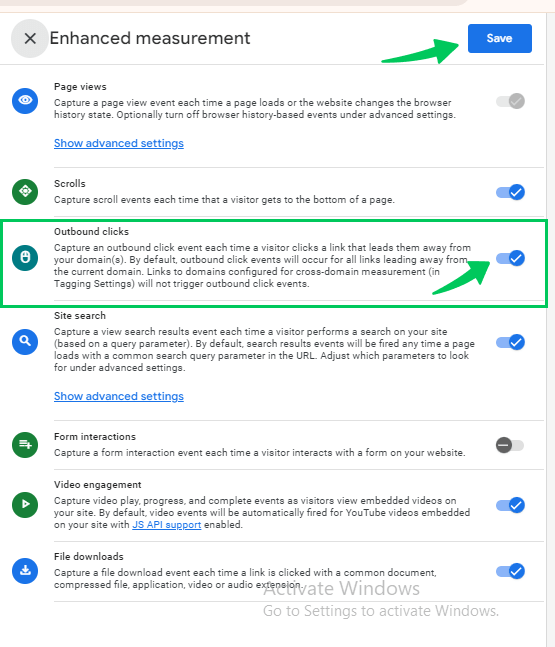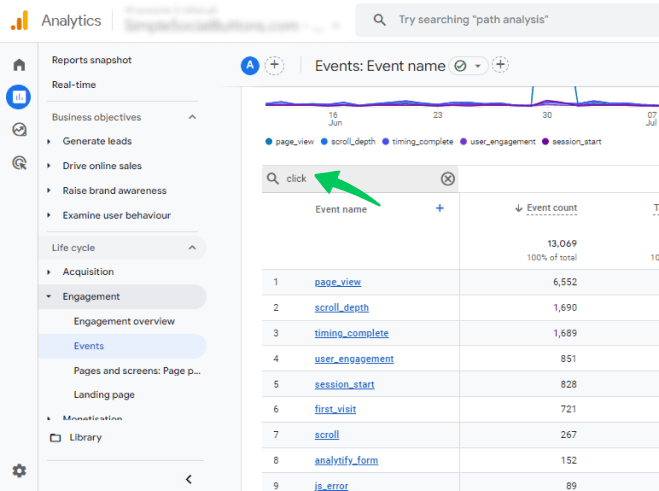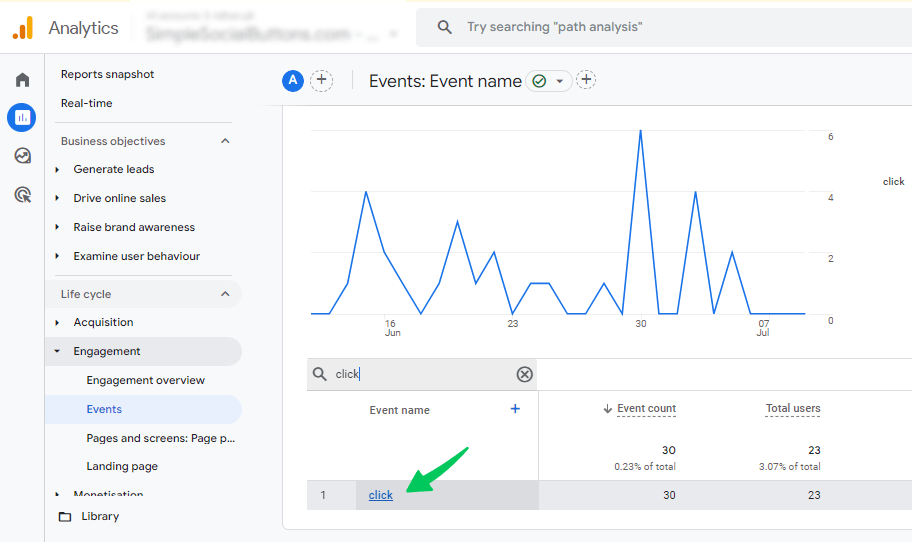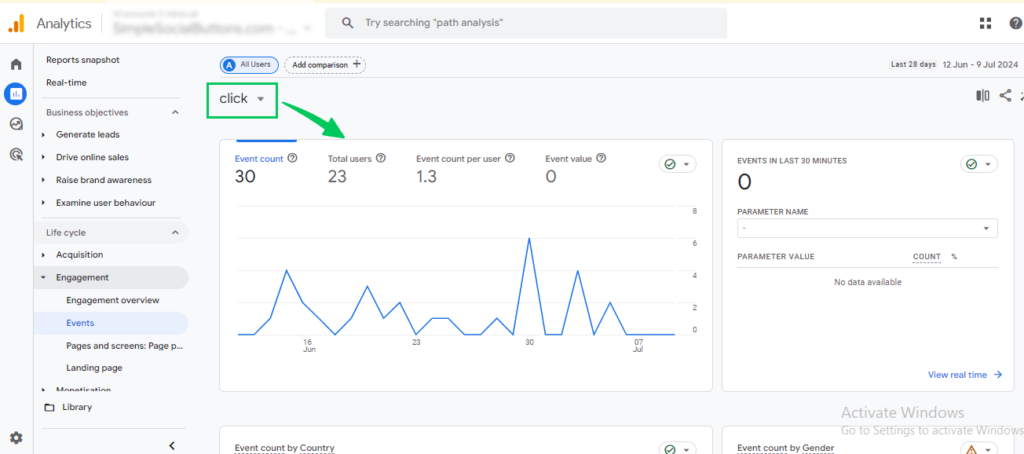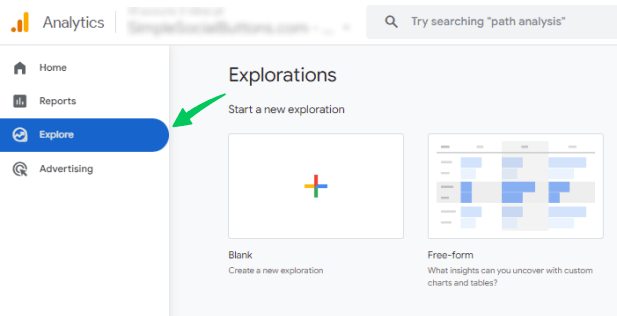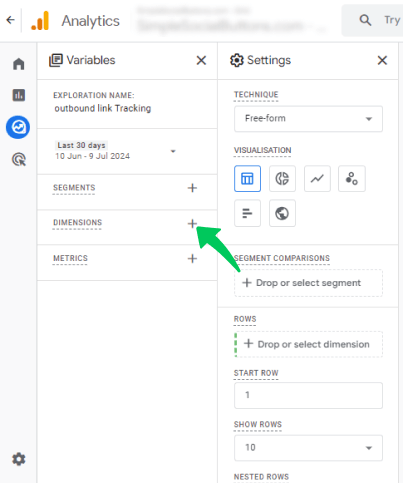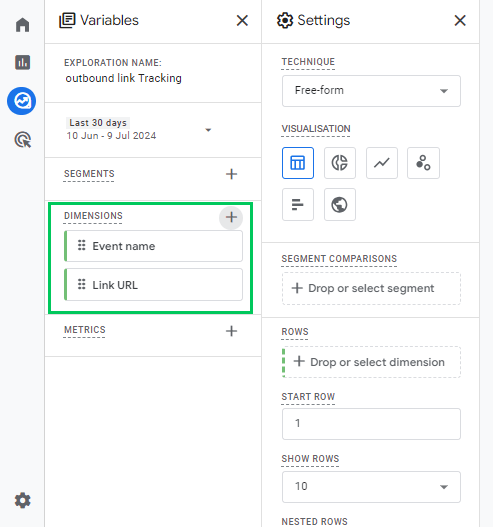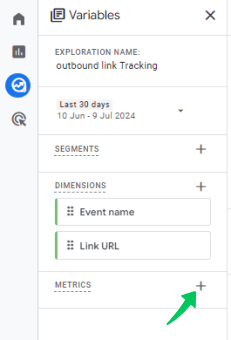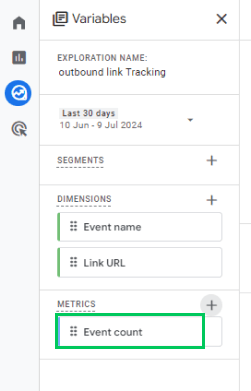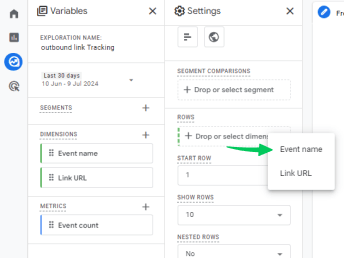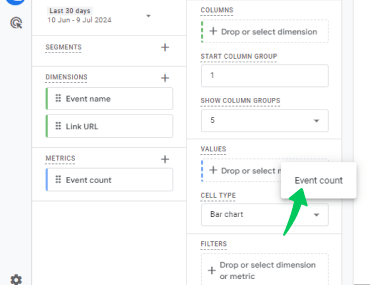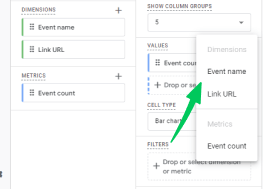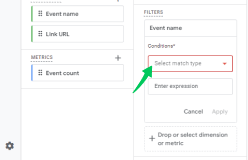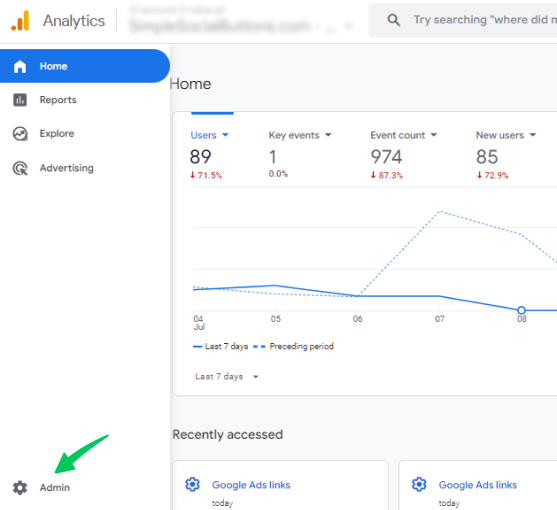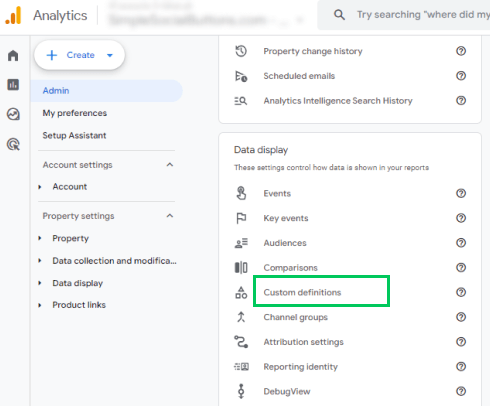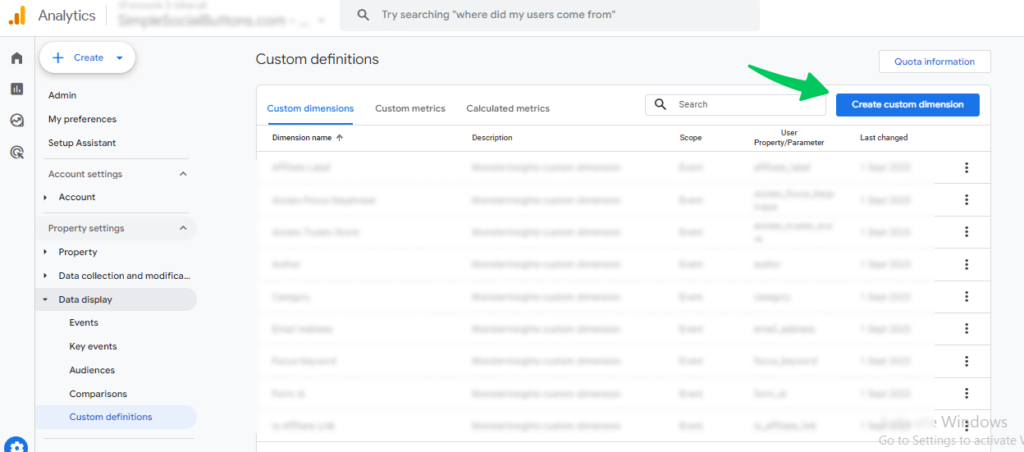
How to Track GA4 Outbound Links (2025)
Have you ever wondered where your website visitors disappear after clicking a link? It’s no longer a mystery. Google Analytics 4 automatically tracks outbound clicks that lead users off your website.
Tracking outbound link in GA4 is crucial to understanding user behavior on your website. When users click on links that lead to external sites, this indicates their interests and engagement levels. By effectively monitoring these outbound link clicks, you can gain valuable knowledge of your audience’s preferences and refine your content strategy accordingly.
This guide will explore setting up and tracking outbound links in Google Analytics 4 (GA4). Learning to track GA4 outbound links will enhance your ability to optimize your website’s performance.
GA4 Outbound Links (TOC):
What are Outbound Links?
Outbound links, or external links, are hyperlinks on your website that lead users to a different domain – a completely separate website. When visitors click on an outbound link, they are directed away from your site and onto the linked website.
Here are some common examples of outbound links to have a better understanding:
- Links to relevant articles or resources on other websites.
- Links to social media profiles of your company or brand.
Outbound link tracking is the process of monitoring and analyzing clicks on links that lead users away from your website to a different domain.
For example, You have a blog post with a recipe for chocolate chip cookies. In the recipe, you mention that using high-quality chocolate chips makes a big difference. You include a link to a popular online store selling gourmet chocolate chips (an outbound link).
Outbound Link Tracking in UA vs. GA4
The approach to outbound link tracking in Google Analytics 4 differs from Universal Analytics (UA) . Here’s a comparison table highlighting the key differences:
| Feature | Universal Analytics (UA) | Google Analytics 4 (GA4) |
| Outbound Link Tracking | Not tracked by default | Automatically tracked |
| Setup Required | Requires manual configuration of event tracking or custom dimensions | No additional setup is needed |
| Data Captured | Limited data (click only) | Richer data: click, link URL, domain, link ID, link classes |
| Reporting | No dedicated reports for outbound clicks | Outbound clicks are captured as “click” events in standard reports. Requires filtering or explorations for detailed analysis. |
| Custom Dimensions | Can be created for outbound link URLs | Can be created for outbound link URLs |
| Data Latency (Delay in data reporting) | Similar to GA4 (around 24 hours) | Similar to UA (around 24 hours) |
How Does GA4 Outbound Link Tracking Work?
Unlike UA, Google Analytics 4 (GA4) streamlines outbound link tracking, automatically capturing clicks that lead users away from your website. But we will explore how exactly this happens.
1. Enhanced Measurement:
The foundation for Tracking outbound link in GA4 lies in Enhanced Measurement, a feature typically enabled by default in GA4 that automatically collects data on various user interactions, including clicks on outbound links.
2. Click Event:
When a user clicks on a link leading to a different domain, GA4 registers this interaction as a click event. This event captures not just the fact that a click occurred but also additional details:
- link_url: This parameter stores the actual URL of the outbound link clicked.
- link_domain: This parameter identifies the domain of the outbound link (e.g., “https://www.youtube.com/“).
- link_id: This parameter provides a unique identifier for the clicked link (though its specific use case might vary).
- link_classes: This parameter captures any CSS classes associated with the outbound link (useful for further analysis).
3. Data Collection and Processing:
The click event data is then collected and sent to Google’s servers for processing. There might be a slight delay (typically around 24 hours) before you see this data reflected in your GA4 reports.
4. Finding Your Outbound Link Data:
Once the data is processed, you can access it in various ways within GA4:
- Standard Reports: Under the “Engagement” section, you’ll find an “Events” report. You’ll see the “click” event here, but won’t automatically show individual outbound link URLs.
- Explorations: This powerful tool allows you to create custom reports that filter and analyze outbound link clicks by URL, domain, or other parameters.
- Custom Dimensions: You can create a custom dimension specifically for outbound link URLs for a more detailed view. This allows you to see the exact URLs clicked in your standard reports.
In short, GA4 uses click events with extra details to track where visitors go after leaving your site. This helps you understand what external resources they find interesting and improve your website and content to keep them engaged.
Why Track Outbound Links in GA4?
Understanding how visitors interact with your website is crucial for optimizing its performance. Here’s the reason to track outbound links in Google Analytics:
- Know What Visitors Like: Imagine your site is a magazine with articles and links to other websites. Tracking outbound clicks lets you see which external articles visitors find most interesting. This helps you create content that aligns with their preferences, keeping them on your site for longer.
- Improve Your Website: If everyone keeps clicking a link to a competitor’s product page, this might mean your product information is lacking. Tracking outbound links helps you identify areas where your website can be improved, leading to a happier user experience.
- Boost Marketing Results: Are you promoting products through affiliate links? Tracking clicks on those links lets you see how well your campaigns are doing. You can then adjust your strategies to get more clicks and sales.
- Find New Partners: By seeing which external sites capture user attention, you might discover businesses that complement yours. It could lead to exciting partnerships that reach a wider audience.
- Content Strategy Makeover: Tracking outbound clicks reveals which external content resonates with your visitors. Use this knowledge to create content that keeps them coming back for more.
Understanding which outbound links your visitors click on provides valuable knowledge of their behavior and interests. You can use this data to improve your website’s content strategy, identify potential partnerships, and ultimately achieve your marketing goals.
How To Set Up Outbound Link Tracking in Google Analytics 4?
How to Track Outbound Links in Google Analytics 4 is a crucial step to understanding your website’s performance.GA4 simplifies outbound link tracking by including it within Enhanced Measurement. There are the following steps to enable and ensure GA4 outbound link tracking:
- Navigate to the GA4 property, where you have to make these changes. Click on the Admin option at the bottom left menu bar.
- Select the Data Streams tab under the Data Collection and Modification card.
- Choose the web data stream where you want these changes.
- First of all, ensure that the Enhanced Measurement option is enabled. Then click on the gear icon to access its settings.
- Now click on the toggle button in front of Outbound links. Then click on the save tab to save your changes.
After saving these changes, GA4 outbound link tracking will be enabled. You’ll typically need to wait around 24 hours before seeing this data reflected in your standard and custom reports. Consider it as GA4 taking its time to process the click information and make it available for analysis.
How Do You Find GA4 Outbound Links Data Using Event Reports?
However, there are a few ways to access and analyze the data it collects:
- Under the home icon, go to the reports section.
- Click on the engagement tab under the life cycle. Then Click on the Events tab.
- Type the Click in the search bar, and press the enter key.
- Now click on Click event.
Here, you will see the detailed report of the click event.
How Do You Find GA4 Outbound Links Data By Creating an Exploration Report?
While tracking outbound links in GA4 done automatically, standard reports might not reveal the specific URLs users venture towards. However, Explorations in GA4 offers a powerful tool for creating custom reports and analyzing outbound click data in detail.
Here’s how to create an Exploration report :
- Navigate to Explorations: In your GA4 property, head to the “Explore” section on the left sidebar.
- Choose a Template:
Select the “Blank” template for a clean slate to build your report.
3. Name the report:
Add a name for the new exploration report. Choose date range of the last 30 days.
4. Add Dimensions:
These act as categories for your data. Click the “+” sign in front of dimension. Choose these given dimension and select import tab to save changes.
- Event Name: This will show all events tracked in GA4, including “click” for outbound link clicks.
- Link URL: This reveals the specific URL of each outbound link clicked (optional but highly recommended for in-depth analysis).
you would see all the added dimensions like that.
5. Add Metrics:
While dimensions categorize data, metrics provide measurable values. Consider adding “Event Count” to see the number of clicks for each link. To do this, click on the + sign in front of the Metrics section .
- Choose Event count and import it.
You will see the added metric like that in the metrics section.
6. Populate Rows and values:
Drag and drop the chosen dimensions and metrics to populate the report structure.
- Rows: You can choose to populate by “Event Name” for a general overview or “Link URL” for a detailed breakdown of individual links clicked.
- Value: “Event Count” is dragged here to see the click frequency for each row selection.
7. Add Filter:
Under the filter section, click “Drop or select dimension or metric” and choose “Event name.
“Under the condition column, choose “exactly matches” for the match type. In the expression tab, choose the “click” option. Then click on the Apply tab.
Your Exploration report should now display outbound click data. Analyze which links are clicked the most.
Remember:
- There might be a slight delay (around 24 hours) before seeing data in your report.
- You can further refine your exploration by adding filters or using additional dimensions like “link_domain” or “link_classes” if the click event captures them.
By utilizing Explorations in GA4, you can understand user behavior and determine which external resources your visitors find most interesting. This knowledge empowers you to tailor your website content and marketing strategies for greater success.
Creating a Custom Dimension for Outbound Link URLs in Google Analytics
While Google Analytics 4 (GA4) automatically tracks many user interactions, it doesn’t capture details about outbound links clicked by default. These are links that take users away from your website to another domain.
You can gain this valuable knowledge by creating a custom dimension for outbound link URLs in GA4. Here’s how to create a custom dimension in Google Analytics to track the exact URLs clicked on your website as outbound links:
1. Access the Admin Section:
- Click on the “Admin” tab in the bottom left corner.
2. Navigate to Custom Definitions:
- In the “Property” column, click on “Custom Definitions.”
3. Create a New Custom Dimension:
- Click the blue “New Custom Dimension” button.
4. Enter Dimension Details:
- Name: Choose a clear and descriptive name for your dimension, such as “Outbound Link URL” or ” Link URL.”
- Scope: Select the scope where you want to track the outbound link clicks. Here, you have to choose Event as the scope.
5. Save the Custom Dimension:
- Click the “save ” button to save your new custom dimension.
6. View Your Data:
Once you’ve created the custom dimension, allow some time for data collection.
You can then view the outbound link click data in various standard reports within Google Analytics. Look for reports that allow you to segment by custom dimensions. For example, click Reports > Engagement > Events.
Following these steps, you can create a custom dimension in Google Analytics to gain valuable knowledge about the specific GA4 outbound links clicked on your website.
Outbound Link Tracking With Analytify
Analytify is an easy-to-install and user-friendly plugin that offers comprehensive features to simplify Google Analytics data management within your WordPress dashboard.
Join 50,000+ Beginners & Professionals who use Analytify to Simplify their Google Analytics!
Here’s a quick overview of Analytify features:
- Google Analytics Integration: Effortlessly connect your Google Analytics account to your WordPress site.
- Real-Time Stats: Monitor pageviews, user traffic, and other key metrics in real time to understand website activity as it happens.
- Content Performance Tracking: Identify your most popular content pieces (pages and posts) based on user engagement metrics like pageviews and unique visitors.
- Traffic Source Analysis: Uncover where your website traffic originates from (search engines, social media referrals, direct traffic).
- User Engagement Tracking: Measure how visitors interact with your website content through metrics like bounce rate, average session duration, and pages per session.
Analytify empowers you to track user interactions with external links on your website using its Events Tracking add-on. This functionality provides valuable information about which external links are most clicked, aiding you in crafting a more effective content strategy.
Here are the following Steps to Configure Outbound Link Tracking in Analytify:
- Navigate to Settings: Within your WordPress dashboard, go to Analytify and click on the “Settings” option.
- Access Tracking Options: Under Settings, click on the “Tracking” option. A new window will appear, displaying various tracking configurations.
- Enable Events Tracking: Locate the “Events Tracking” option and click on it.
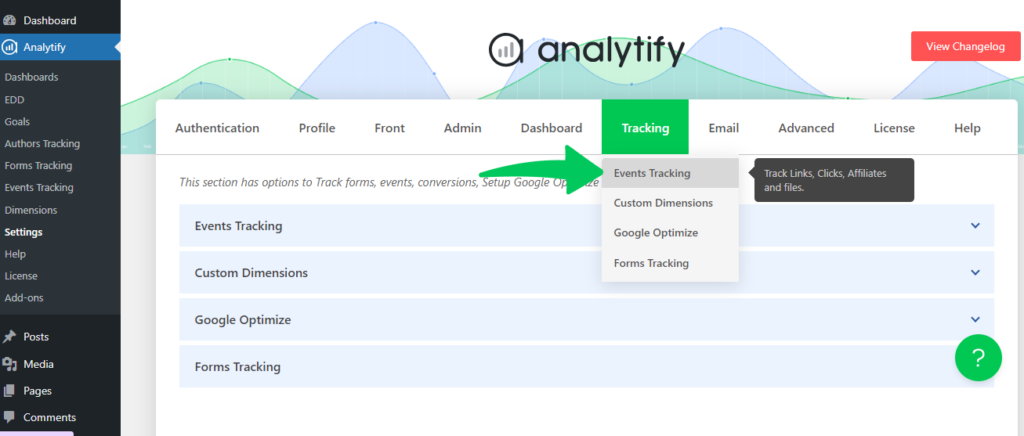
- Define Outbound Links: In the Events Tracking window, you’ll find an option labeled “Affiliate Links.” Here, you can enter the specific affiliate links or internal links you want to track as outbound links.
- Add and Label Links: Click on the “Add Affiliate Link” button and enter your desired affiliate links or internal links along with a descriptive label/name for proper tracking.
- Save Changes: After configuring your outbound links, click on the “Save Changes” button to apply the settings.

Viewing Outbound Link Tracking Data:
Analytify allows you to view analytics reports for your custom events, including outbound link clicks. Here’s how to access these reports:
From your WordPress dashboard, navigate to Analytify and click on the Conversion tab.
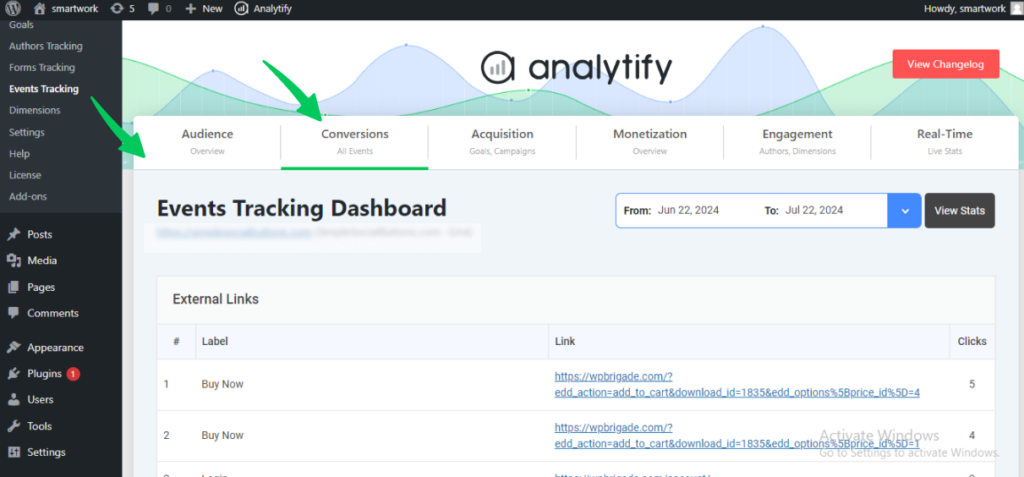
Select “Events Tracking” from the drop-down menu. A new window will display the analytics for your affiliate links and any external links embedded within your website content.
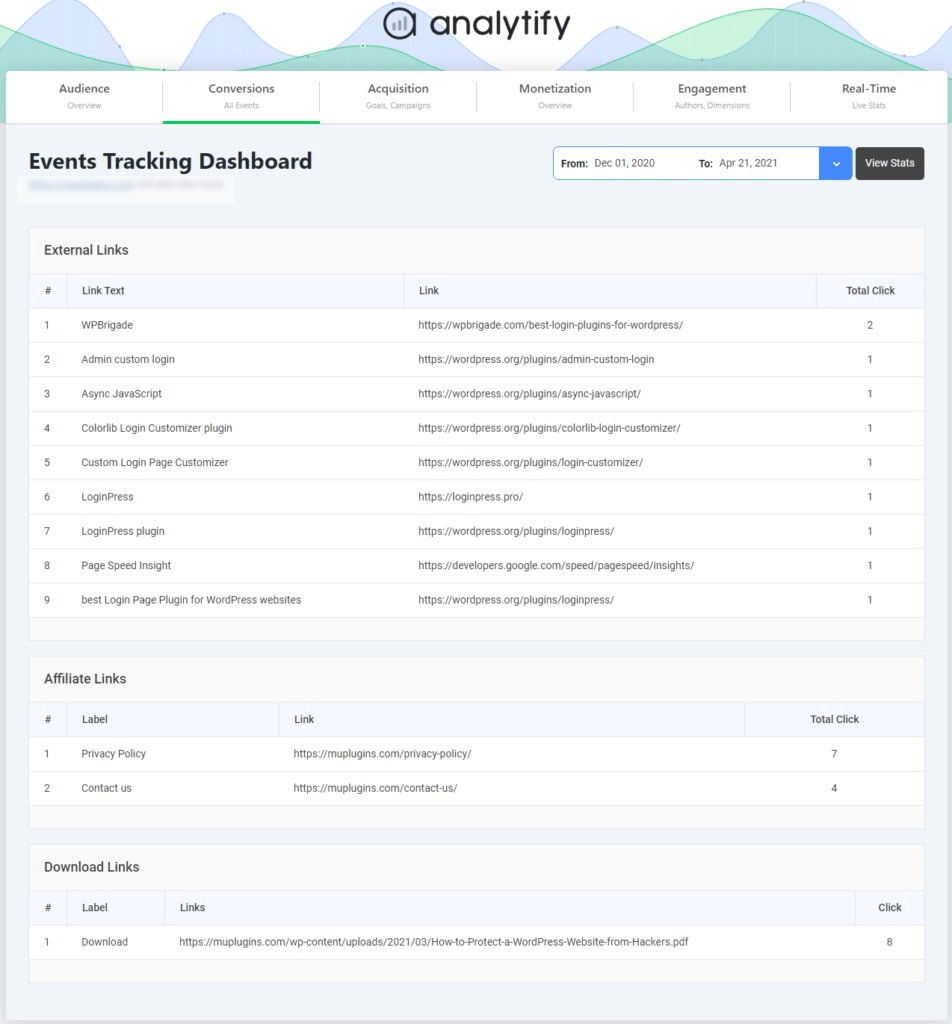
By implementing these steps and leveraging Analytify’s outbound link-tracking feature, you can gain valuable information about user behavior and optimize your website’s content strategy to enhance user engagement.
GA4 Outbound Links FAQ
1. What is the difference between link clicks and outbound clicks?
Link clicks measure any click on a clickable element, like a hyperlink or button. This could take users to another page on the same website or a different website entirely or even trigger an action (like downloading a file). Outbound clicks are a specific type of link click. They only count clicks that take users away from the current website or platform (like Facebook ads).
2. Can you track GA4 outbound links ?
GA4 has a built-in feature called Enhanced Measurement for tracking outbound links. Enabling it automatically captures clicks on links that lead users away from your site. You can then view this data in reports and explorations.
3. What is the difference between incoming links and outgoing links?
Incoming links, also called backlinks or referral traffic, are links from other websites that point to your website. They bring visitors to your site. Outgoing links are links on your website that take visitors to other websites. They direct users away from your site.
4. What are the three types of links in a website?
The three main types of links in terms of website structure are:
Internal Links: These hyperlinks connect one page on your website to another. They help visitors navigate your site and find relevant information.
External Links: These hyperlinks lead users away from your website to a completely different domain. They can help provide additional resources or cite your sources.
Backlinks: External links from other websites that point back to your site. They are essential for SEO (Search Engine Optimization) as they can increase your website’s authority and ranking in search results.
5. How do I track outbound links in GTM?
You can track outbound links in GTM using variables and triggers with a custom setup.
Create an Auto-Event Variable to identify outbound link clicks.
Set up a Click-Just Links trigger that fires only on outbound link clicks based on the variable.
Build a tag (e.g., Google Analytics Event tag) to send the outbound link click data to your analytics platform.
Final Thoughts: GA4 Outbound Links
Track outbound links in Google Analytics is essential for understanding user behavior and the performance of your external links. Here are the key points to remember:
- Monitoring outbound link clicks helps you understand user interests and engagement, informing your content strategy and user experience optimization.
- GA4 offers streamlined and efficient methods for setting up outbound link tracking, making it easier to gather accurate data.
- Utilize GA4’s event tracking capabilities to create custom events for outbound link clicks, ensuring precise data collection.
- Integrate GA4 with GTM to simplify the process of tracking outbound links, enabling automated data collection and management.
- Analyze the collected data to identify trends and patterns in user behavior.
- Review and refine your tracking setup regularly, ensuring your approach remains effective and up-to-date.
For more information on related topics, you can explore these articles:
By leveraging these additional resources, you can further refine your tracking capabilities and stay ahead. Is there anything else you want to know? Leave a comment below.





